Where the Wealthy Went: 7 Historical Summer Resorts
Imagine Gatsby-style summer galas where millionaires and movie stars, tycoons and wealthy politicians mixed and mingled from the end of the Civil War through the Roaring Twenties. We’ve gathered a list of seven world-renowned summer resort destinations that harbor over 100 years of history. Each is famous for its historic architecture, opulent mansions built as summer cottages and beautiful coastlines, yet each boasts its own unique charm.
Experience the grandeur of these seven lovely summer retreats to learn the fascinating history behind them.
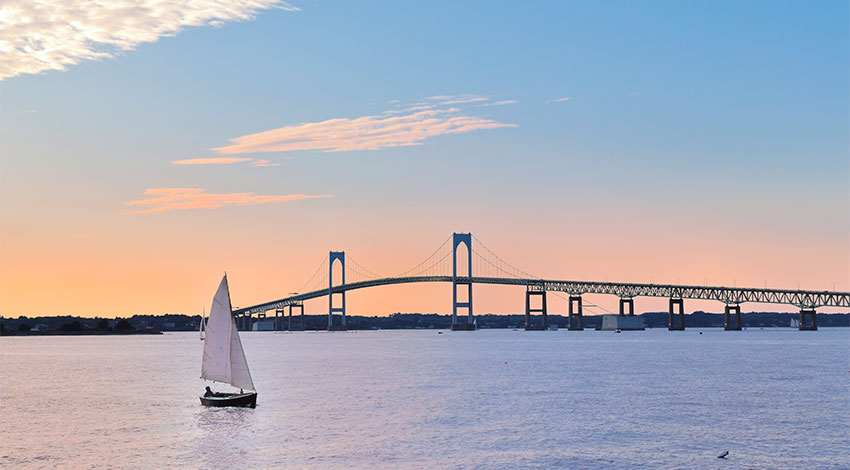
Newport, Rhode Island
(Population: 25,000)
Newport is tucked into the southern inlet of the state of Rhode Island on Aquidneck Island. The city emerged as a summer resort at the turn of the century. Artists, famous thinkers and wealthy industrialists arrived after the Civil War to build opulent Gilded Age mansions and throw lavish parties. Newport became known as “The Queen of Resorts,” and has hosted rich and famous visitors from the Vanderbilts to the Kennedys.
Take a stroll on the Cliff Walk to admire the restored mansions, or explore one to hear stories of extravagant history. Enjoy the town’s music festivals and museums or visit with Road Scholar to explore the history of Newport with local experts.
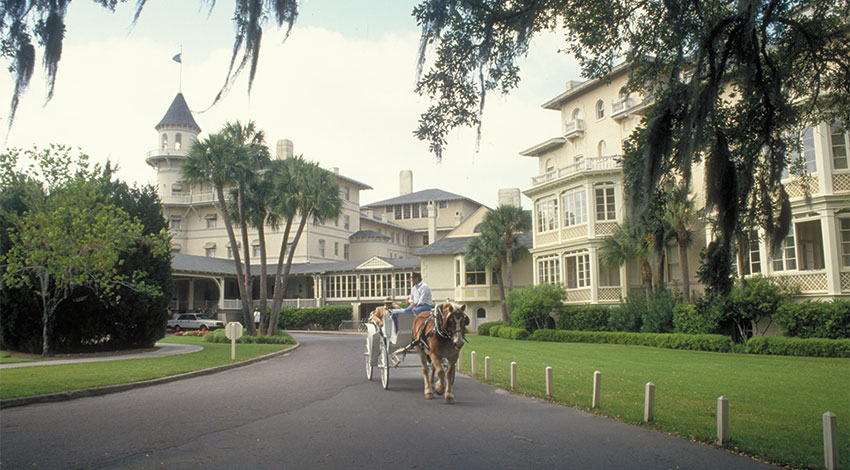
Jekyll Island, Georgia
(Population: 600)
The beautiful, historic paradise of Jekyll Island off the southern coast of Georgia has been home to Georgia’s first brewery, a cotton plantation, Confederate troops and an exclusive hunting club. In 1886, it was purchased by the Jekyll Island Club to create a vacation resort that attracted millionaires like J.P. Morgan, William Rockefeller and William K. Vanderbilt. The island was evacuated during WWII and sold to the state of Georgia in 1947 for use as a State Park. In 1950, a drawbridge opened, welcoming vacationers to come ashore once again.
Explore the history of the Jekyll Island Club National Historic Landmark District — one of the largest preservation projects in the southeast. Stay in the Jekyll Island Club’s original Clubhouse, converted into a hotel, or visit with Road Scholar to learn about anything from jazz to golf to watercolor painting.
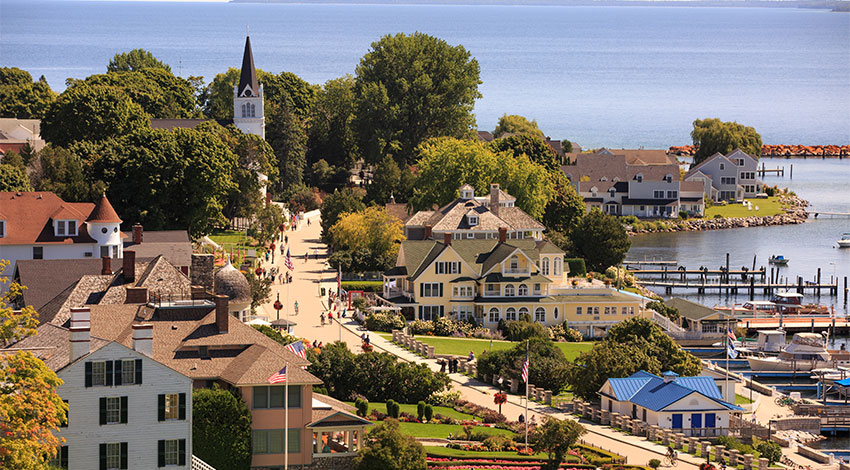
Mackinac Island, Michigan
(Population: 500)
This island resort in Lake Huron, between the upper and lower peninsulas of Michigan, was home to a British fort during the Revolutionary War and the site of two battles of the War of 1812. It served as a Confederate prison during the Civil War and was a center for fur trade and commercial fishing throughout the 19th century. In the 1880s, tourists began arriving by boat from Buffalo, Cleveland, Chicago and Detroit. The grandiose and historic cottages built by wealthy business magnates along the island’s east and west bluffs and the beautiful Victorian architecture along Main Street are carefully protected — the entire island is a National Historic Landmark.
Travel by ferry to Mackinac Island and explore its State Park (established in 1875), which takes up 80 percent of the island. Stay at a historic B&B, and visit Fort Mackinac and the opulent and historic Grand Hotel for tea. Cars have been banned since the late-19th century, and horse and carriage and bicycle travel add to the charm of a visit to Mackinac Island.
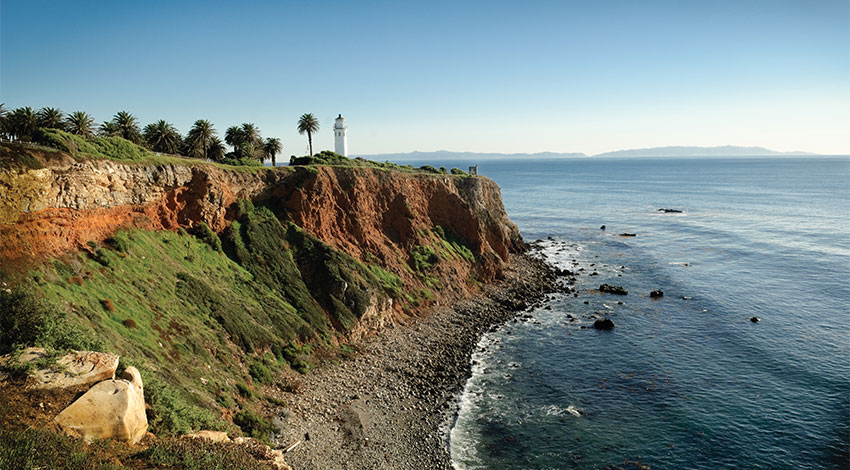
Catalina Island, California
(Population: 4,000)
Catalina Island is part of the Channel Islands archipelago off the coast of Southern California. Pirates once hid among its quiet coves, and the entire island was owned by California’s wealthiest man. Then a real estate developer established Avalon in 1887, and a new resort destination was born. The famous Tuna Club, opened in 1898, hosted members like Bing Crosby and Charlie Chaplin. After a 1915 fire burned half the town, William Wrigley Jr. (of chewing gum fame) bought most of the shares from the island’s owners, investing millions in infrastructure and attractions. In 1975, Philip Wrigley deeded 90 percent of the island to the Catalina Island Conservancy.
Take a cruise on a glass-bottom boat to see reefs and shipwrecks, or explore the Island from your home base on the historic Queen Mary. Scuba dive, snorkel, fly fish, parasail, or visit the Catalina Island Museum in the historic 1920 Catalina Casino to learn about the history of the island.
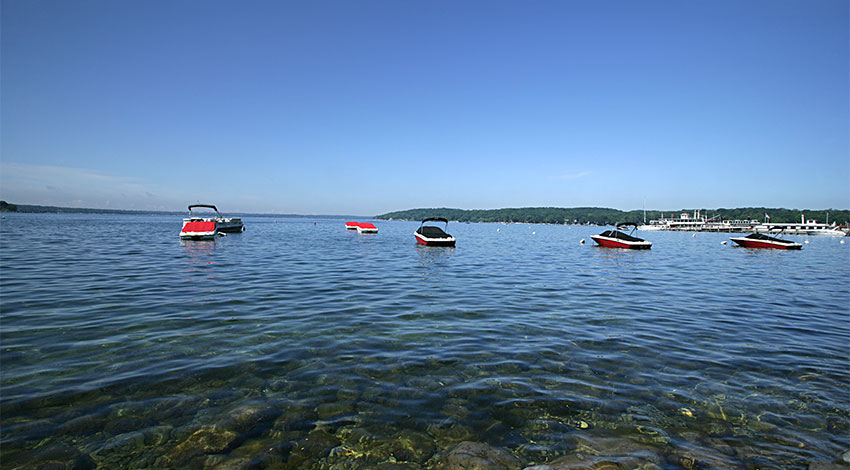
Lake Geneva, Wisconsin
(Population: 7500)
In southeastern Wisconsin, just over an hour from Chicago and under an hour from Milwaukee, a small Midwestern town called Lake Geneva is perched on the shores of a sparkling lake by the same name. In the mid-19th century, railroad access from Chicago transformed Lake Geneva into a serene getaway for wealthy tycoons, and the town became known as “the Newport of the West.” Mary Todd Lincoln and Gen. William Tecumseh Sherman were two of the town’s most famous visitors.
Visit Lake Geneva to marvel at the beautiful lakeside mansions, built from 1850-1930, and explore the 1888 Black Point Estate. Rent a boat to spend a day on the lake or travel to Lake Geneva with Road Scholar to study Jane Austen and more.
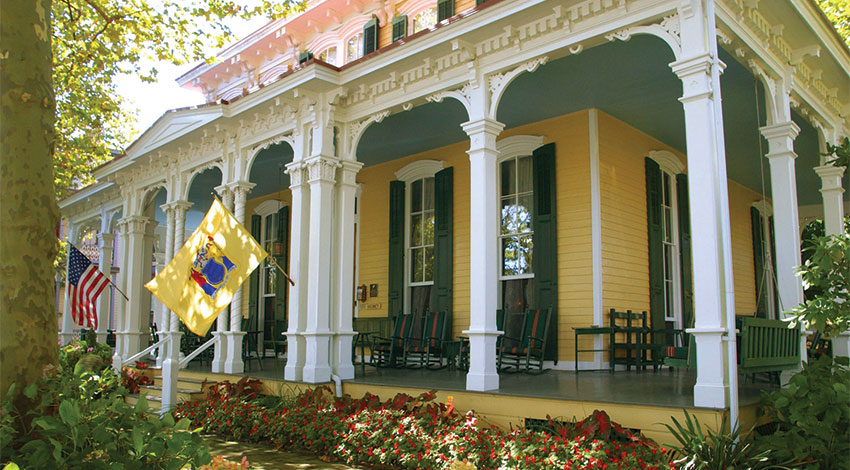
Cape May, New Jersey
(Population: 3,500)
Cape May sits on the end of New Jersey’s Cape May Peninsula and looks out at Delaware Bay and the Atlantic. The town began hosting vacationers from Philadelphia in the mid-18th century, making it one of America’s oldest vacation resort destinations. Cape May is the only U.S. city designated entirely as a historic landmark, known for its beautiful Victorian homes and buildings that replaced much of the town’s center that was destroyed in an 1878 fire. The island hosted countless politicians, professional athletes, artists and a U.S. Navy facility during WWII.
Search for Cape May diamonds (quartz pebbles) along Cape May’s world-famous beaches, or take a cruise out to Cape May Lighthouse. Discover the diverse migratory bird population, watch for whales or enjoy the local theater and music festivals in Cape May.
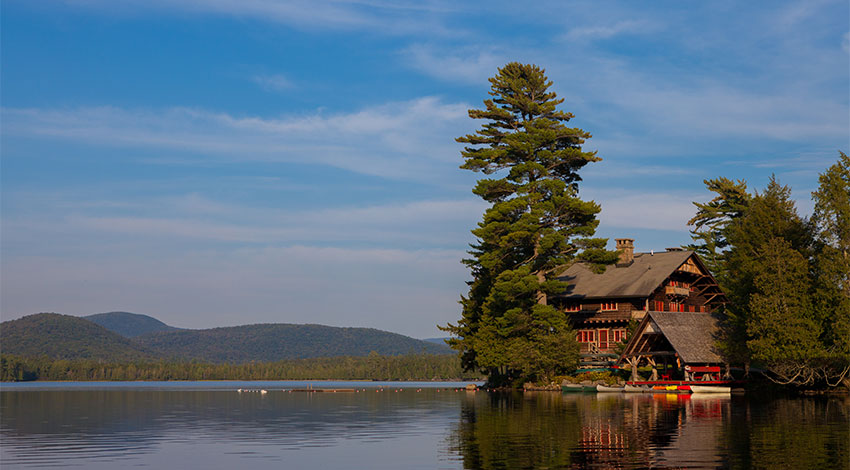
Saratoga Springs, New York
(Population: 27,000)
The famous mineral water that gives Saratoga Springs its name has been attracting tourists to upstate New York for over 200 years, and tourism began to flourish with the construction of the Saratoga and Schenectady Railroad in 1832. Spas and large hotels were built throughout the 19th century, including Grand Union Hotel — the largest hotel in the world at the time. The opening of Saratoga Race Course in 1863 brought a new attraction, and Saratoga Springs was home or a retreat to many rich and famous people, including Gen. Ulysses S. Grant.
Visit the many Revolutionary War sites in the area, enjoy the performing arts scene, take in a round of golf and visit Saratoga Spa State Park for hiking and dip in the mineral baths. Venture to nearby Great Camp Sagamore to experience turn-of-the-century grandeur in the heart of the Adirondacks.
